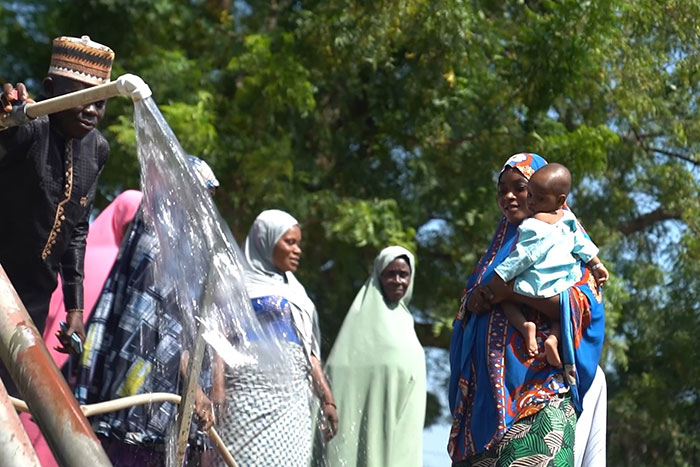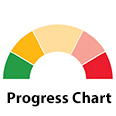Sustainable cities and communities

Community residents in Niger State, Nigeria fetch water from a rehabilitated bi-water scheme following a UN-Habitat intervention under the pilot of the Niger State Urban Policy.
© UN-Habitat/Emmanuel Adelekeareas. This integrated approach – combining infrastructure, financing and participatory governance – is essential for inclusive cities that leave no one behind.
Housing affordability crisis affects up to 3 billion people worldwide
Housing affordability has reached crisis levels amid rapid urbanization, impacting between 1.6 and 3 billion people worldwide. Alarmingly, 1.12 billion individuals live in slums or informal settlements, facing challenges such as overcrowding, homelessness and lack of basic services. Data from 124 countries show that, in 2023, the global average housing cost burden – the proportion of a household’s income on housing expenses such as rent or mortgage payments and utilities – stood at 31.0 per cent, with stark disparities across regions. Sub-Saharan Africa experienced the highest burden at 43.5 per cent, followed by Northern Africa and Western Asia at 36.9 per cent. Meanwhile, Europe and Northern America reported a lower burden, at 21.4 per cent, thanks to stronger regulatory frameworks and financial support systems.
Solving the housing affordability crisis requires upgrading informal and public housing while enabling private markets to better serve low-income groups. Key enablers include accessible peri-urban land, strong transport connectivity, streamlined regulations, secure tenure and wider access to mortgages and microfinance. Reliable and disaggregated data are also critical for guiding effective policies to ensure affordable housing and inclusive urban development for everyone.
Average housing cost burden, 2023 (percentage)

Note: Numbers in parentheses are the number of countries with data in each region.
Rapid urbanization calls for a focus on urban climate adaptation
With half the global population currently residing in cities and this proportion projected to increase to 70 per cent by 2050, cities play a crucial role in fighting climate change. By 2040, more than 2 billion urban residents could face an additional temperature rise of at least 0.5°C, and 36 per cent of the global urban population may endure annual mean temperatures of 29°C or higher. Flood risks are also escalating. In 2025, 1 billion people live in areas prone to severe riverine flooding, half of them in cities. Since 1975, urban flood exposure has surged to 3.5 times that of rural areas, worsening climate vulnerabilities.
Green spaces in urban areas, a key factor in climate resilience, shrank from 19.5 per cent in 1990 to just 13.9 per cent in 2020. Cities require $4.5 trillion to $5.4 trillion annually through 2030 for climate-resilient infrastructure, but they secured only $831 billion yearly for 2021–2022. Just over 1 per cent of this funding was directed towards adaptation measures.
Governments and global organizations must prioritize urban climate action through low-carbon and resilient housing, by re-establishing open spaces and green areas, and by fostering multilevel governance. Initiatives such as the Local2030 Coalition accelerate progress by sharing best practices and mobilizing resources. Closing data gaps and driving innovation will be essential for cities to mitigate and to adapt swiftly to worsening climate threats.
Local disaster risk reduction strategies gain momentum amid mounting infrastructure threats from climate disasters
Disasters continue to damage critical infrastructure and disrupt essential services despite growing investments aimed at resilience. From 2015 to 2023, based on data from 115 reporting countries, an average of 92,199 infrastructure units were impaired or destroyed each year, and over 1.6 million annual service disruptions occurred – particularly in education and healthcare. Building disaster- and climate-resilient infrastructure remains a strategic priority, requiring sustained funding and political commitment.
Localizing disaster risk reduction is key to reducing losses and ensuring no one is left behind – especially women, girls and marginalized groups. As of 2024, 110 countries report local disaster risk reduction strategies aligned with national plans, with an average of 73 per cent of municipalities implementing them.
Limited civil society participation undermines inclusive urban planning
Limited civil society participation in urban planning and management remains a major barrier to inclusive and sustainable urban development. A 2024 survey of 152 cities in 50 countries found only 19 per cent of cities (29 cities) demonstrated strong civil society participation in urban planning, while 18 per cent showed medium participation, 35 per cent low participation and 29 per cent very limited or no participation.
This lack of civic engagement in decision-making processes threatens urban equity, effective service delivery and trust in institutions – disproportionately affecting marginalized groups such as women, youth, persons with disabilities and slum dwellers. To enhance inclusive urban development cities must invest in robust systems to empower and facilitate meaningful participation by all population groups in the planning, managing, budgeting and decision-making processes.
Rapid urban expansion necessitates better coverage of municipal solid waste collection
As cities expand rapidly, managing municipal solid waste has become a critical challenge. Despite global efforts, wide regional disparities persist in waste collection coverage, exposing inequalities in infrastructure, governance and access to basic services. Between 2010 and 2024, data from 4,383 cities reveal that Europe and Northern America lead with an average collection coverage of 99.4 per cent, followed by Australia and New Zealand (98.9 per cent). Other regions, such as Northern Africa and Western Asia (94.8 per cent) and Latin America and the Caribbean (90.6 per cent) show strong performance. However, Eastern and South-Eastern Asia (64.7 per cent) and sub-Saharan Africa (62.6 per cent) face the greatest challenges.
Closing these gaps demands coordinated investment in collection infrastructure, supportive policies and financial incentives. Cities should leverage digital tools, smart bins, and waste-to-energy technologies, as well as foster public-private partnerships and community engagement to ensure clean, healthy urban environments.
Average coverage of municipal solid waste collection, latest data from 2010–2024 (percentage)

*Excluding Australia and New Zealand.
Despite progress in national urban policies, financing at the local level lags behind
National urban policies (NUPs) are key to sustainable urban development, but they can only succeed when they are effectively implemented, financed and monitored. In the 2023 global NUP review, 68 countries reported NUPs meeting at least one qualifier of SDG indicator 11.a.1. Between 2021 and 2023, the number of countries addressing population dynamics rose from 54 to 59 (87 per cent of respondents), while the number ensuring balanced territorial development remained constant at 55 (81 per cent). The number of countries enhancing local fiscal space grew from 26 in 2021 (45 per cent) to 33 in 2023 (49 per cent). While these gains are evident, accelerating fiscal decentralization remains a critical priority for urban policies.
To unlock their full potential, NUPs must be grounded in robust data, aligned with national reform agendas, and backed by clear frameworks for national-local financial empowerment and local revenue mobilization – enabling cities to innovate, reduce reliance on central transfers, and build more inclusive, resilient urban and territorial systems.
Wide gaps remain in public spending for heritage preservation
In the past five years, the number of countries tracking how much they spend on protecting cultural and natural heritage has tripled – jumping to 82 countries. This shows a strong and growing commitment worldwide to preserving important sites and traditions. Developing countries have made especially big improvements, with Europe and Northern America’s share of reporting countries dropping from over two thirds to 40 per cent in just three years.
Between 2019 and 2023, the global median public expenditure on cultural and natural heritage was $21.22 per person (constant 2017 PPP), with wide variation – from under $1 to $367. Developed countries reported a median of $83.3 per person, compared to just $3.86 in developing countries, highlighting stark investment disparities.

